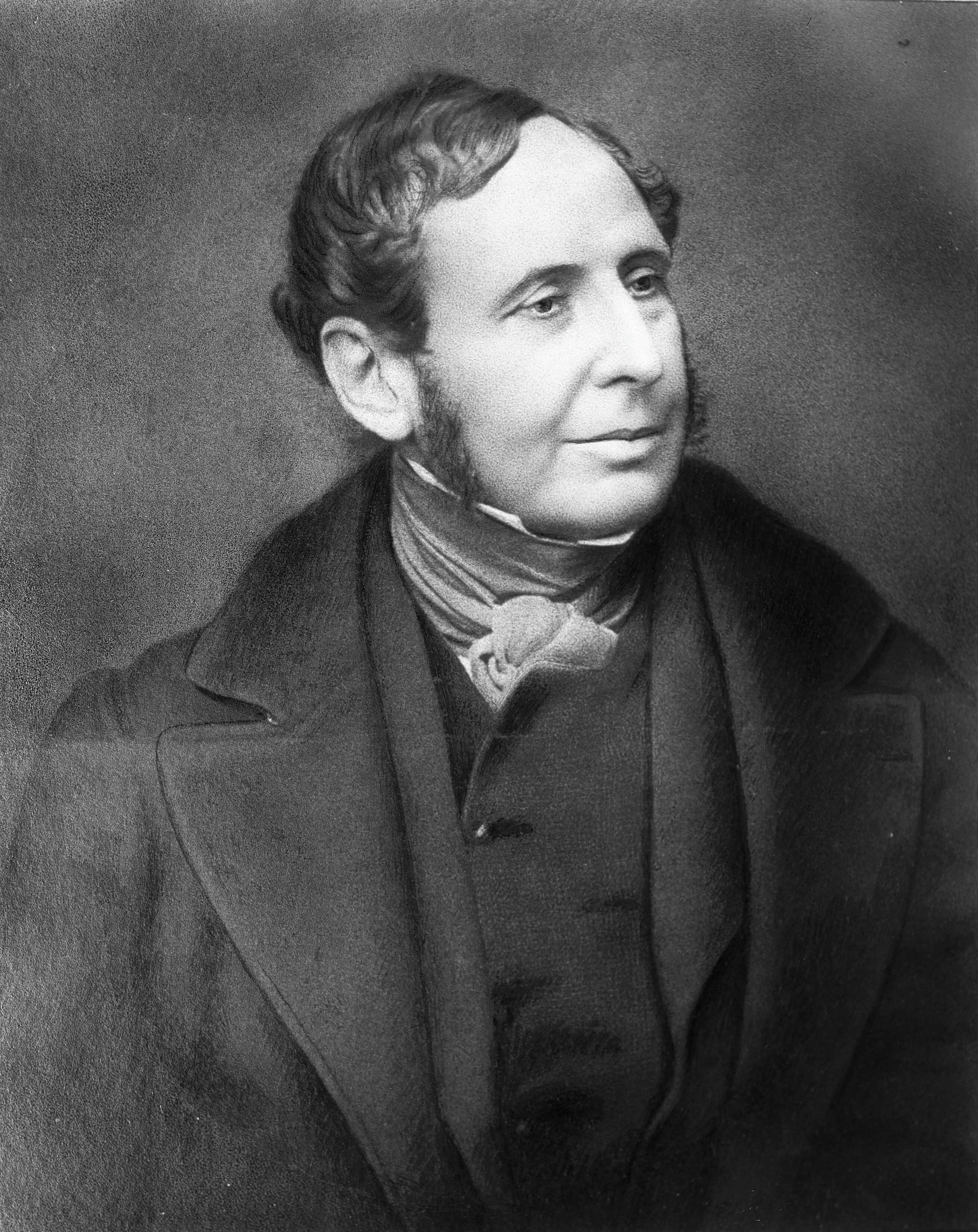|
Buys Ballot's Law
In meteorology, Buys Ballot's law () may be expressed as follows: In the Northern Hemisphere, if a person stands with their back to the wind, the atmospheric pressure is low to the left, high to the right. This is because wind travels counterclockwise around low pressure zones in the Northern Hemisphere. It is approximately true in the higher latitudes of the Northern Hemisphere, and is reversed in the Southern Hemisphere, but the angle between the pressure gradient force and wind is not a right angle in low latitudes. A version taught to US Naval Cadets in WW2 is: "In the Northern Hemisphere, if you turn your back to the wind, the low pressure center will be to your left and somewhat toward the front." History As early as the 16th century extensive weather observations were included as part of a ship's log. These observations as well as other log information, were turned over to national hydrographic institutes in various nations, most notably Germany and England and later t ... [...More Info...] [...Related Items...] OR: [Wikipedia] [Google] [Baidu] |
William Ferrel
William Ferrel (January 29, 1817 – September 18, 1891) was an American meteorologist who developed theories that explained the mid-latitude atmospheric circulation cell in detail, and it is after him that the Ferrel cell is named. Biography Ferrel was born in Fulton county in southern Pennsylvania. He was the eldest of eight children born to his father, Benjamin Ferrel, and his mother, whose first name is unknown. His mother was a farmer’s daughter, and his family owned a farm in the Allegheny Mountains on which he was raised. At age twelve, he was working on both the farm and the saw-mill on it. They moved to what would become West Virginia in 1829. His formal elementary schooling was limited and he only attended for two winters, but was inspired by science especially due to witnessing a partial solar eclipse in 1832. Using science books, which he went into Martinsburg and Hagerstown to purchase, he taught himself well enough to become a school teacher. He saved his sala ... [...More Info...] [...Related Items...] OR: [Wikipedia] [Google] [Baidu] |
Storm Surge
A storm surge, storm flood, tidal surge, or storm tide is a coastal flood or tsunami-like phenomenon of rising water commonly associated with low-pressure weather systems, such as cyclones. It is measured as the rise in water level above the normal tidal level, and does not include waves. The main meteorological factor contributing to a storm surge is high-speed wind pushing water towards the coast over a long fetch. Other factors affecting storm surge severity include the shallowness and orientation of the water body in the storm path, the timing of tides, and the atmospheric pressure drop due to the storm. As extreme weather becomes more intense and the sea level rises due to climate change, storm surges are expected to cause more risk to coastal populations. Communities and governments can adapt by building hard infrastructure, like surge barriers, soft infrastructure, like coastal dunes or mangroves, improving coastal construction practices and building social strat ... [...More Info...] [...Related Items...] OR: [Wikipedia] [Google] [Baidu] |
Wind Direction
Wind direction is generally reported by the direction from which the wind originates. For example, a ''north'' or ''northerly'' wind blows from the north to the south; the exceptions are onshore winds (blowing onto the shore from the water) and offshore winds (blowing off the shore to the water). Wind direction is usually reported in cardinal (or compass) direction, or in degrees. Consequently, a wind blowing from the north has a wind direction referred to as 0° (360°); a wind blowing from the east has a wind direction referred to as 90°, etc. Weather forecasts typically give the direction of the wind along with its speed, for example a "northerly wind at 15 km/h" is a wind blowing ''from'' the north at a speed of 15 km/h. If wind gusts are present, their speed may also be reported. Measurement techniques A variety of instruments can be used to measure wind direction, such as the anemoscope, windsock, and wind vane. All these instruments work by moving to minimize ... [...More Info...] [...Related Items...] OR: [Wikipedia] [Google] [Baidu] |
Hurricane
A tropical cyclone is a rapidly rotating storm system with a low-pressure area, a closed low-level atmospheric circulation, strong winds, and a spiral arrangement of thunderstorms that produce heavy rain and squalls. Depending on its location and strength, a tropical cyclone is called a hurricane (), typhoon (), tropical storm, cyclonic storm, tropical depression, or simply cyclone. A hurricane is a strong tropical cyclone that occurs in the Atlantic Ocean or northeastern Pacific Ocean. A typhoon is the same thing which occurs in the northwestern Pacific Ocean. In the Indian Ocean and South Pacific, comparable storms are referred to as "tropical cyclones". In modern times, on average around 80 to 90 named tropical cyclones form each year around the world, over half of which develop hurricane-force winds of or more. Tropical cyclones typically form over large bodies of relatively warm water. They derive their energy through the evaporation of water from the ocean ... [...More Info...] [...Related Items...] OR: [Wikipedia] [Google] [Baidu] |
American Practical Navigator
''The American Practical Navigator'' (colloquially often referred to as ''Bowditch''), originally written by Nathaniel Bowditch, is an encyclopedia of navigation. It serves as a valuable handbook on oceanography and meteorology, and contains useful tables and a maritime glossary. In 1867 the copyright and plates were bought by the Hydrographic Office of the United States Navy. As of 2019 it is still published by the U.S. Government and is available free online from the National Geospatial-Intelligence Agency (NGA), the modern successor agency to the 19th Century Hydrographic Office. The publication is considered one of America's nautical institutions. History The most popular navigational text of the late 18th century was ''The Practical Navigator'' by John Hamilton Moore of the Royal Navy, first published in 1772. To have exact tables to work from, Bowditch recomputed all of Moore's tables, and rearranged and expanded the work. He contacted the US publisher of the work, Edm ... [...More Info...] [...Related Items...] OR: [Wikipedia] [Google] [Baidu] |
Robert FitzRoy
Vice-Admiral Robert FitzRoy (5 July 1805 – 30 April 1865) was an English officer of the Royal Navy, politician and scientist who served as the second governor of New Zealand between 1843 and 1845. He achieved lasting fame as the captain of during Charles Darwin's famous Second voyage of HMS Beagle, voyage, FitzRoy's second expedition to Tierra del Fuego and the Southern Cone. FitzRoy was a pioneering meteorologist who made accurate weather forecasting, daily weather predictions, which he called by a new name of his own invention: "forecasts". In 1854 he established what would later be called the Met Office, and created systems to get weather information to sailors and fishermen for their safety. He was an able surveyor and hydrography, hydrographer. As Governor of New Zealand, serving from 1843 to 1845, he tried to protect the Māori people, Māori from illegal land sales claimed by British settlers. Early life and career Robert FitzRoy was born at Ampton Hall, Ampton, Suf ... [...More Info...] [...Related Items...] OR: [Wikipedia] [Google] [Baidu] |
Met Office
The Met Office, until November 2000 officially the Meteorological Office, is the United Kingdom's national weather and climate service. It is an executive agency and trading fund of the Department for Science, Innovation and Technology and is led by CEO Penelope Endersby, who took on the role as Chief Executive in December 2018 and is the first woman to do so. The Met Office makes meteorological predictions across all timescales from weather forecasts to climate change. Although an executive agency of the UK Government, the Met Office supports the Scottish Government, Welsh Government and Northern Ireland Executive in their functions and preparations ahead of intense weather and planning for extreme weather alerts. Met Office policies can be used by each government to inform their planning and decision making processes. The Met Office has an office located in the Scottish capital, Edinburgh, and a forecasting centre in Aberdeen in the north–east of Scotland, which are s ... [...More Info...] [...Related Items...] OR: [Wikipedia] [Google] [Baidu] |
Empirical Validation
Empirical evidence is evidence obtained through sense experience or experimental procedure. It is of central importance to the sciences and plays a role in various other fields, like epistemology and law. There is no general agreement on how the terms ''evidence'' and ''empirical'' are to be defined. Often different fields work with quite different conceptions. In epistemology, evidence is what justifies beliefs or what determines whether holding a certain belief is rational. This is only possible if the evidence is possessed by the person, which has prompted various epistemologists to conceive evidence as private mental states like experiences or other beliefs. In philosophy of science, on the other hand, evidence is understood as that which '' confirms'' or ''disconfirms'' scientific hypotheses and arbitrates between competing theories. For this role, evidence must be public and uncontroversial, like observable physical objects or events and unlike private mental states, so th ... [...More Info...] [...Related Items...] OR: [Wikipedia] [Google] [Baidu] |
Comptes Rendus De L'Académie Des Sciences
(, ''Proceedings of the Academy of Sciences''), or simply ''Comptes rendus'', is a French scientific journal published since 1835. It is the proceedings of the French Academy of Sciences. It is currently split into seven sections, published on behalf of the Academy until 2020 by Elsevier: ''Mathématique, Mécanique, Physique, Géoscience, Palévol, Chimie, ''and'' Biologies.'' As of 2020, the ''Comptes Rendus'' journals are published by the Academy with a diamond open access model. Naming history The journal has had several name changes and splits over the years. 1835–1965 ''Comptes rendus'' was initially established in 1835 as ''Comptes rendus hebdomadaires des séances de l'Académie des Sciences''. It began as an alternative publication pathway for more prompt publication than the ''Mémoires de l'Académie des Sciences,'' which had been published since 1666. The ''Mémoires,'' which continued to be published alongside the ''Comptes rendus'' throughout the ninetee ... [...More Info...] [...Related Items...] OR: [Wikipedia] [Google] [Baidu] |
Ferrel's Law
In physics, the Coriolis force is a pseudo force that acts on objects in motion within a frame of reference that rotates with respect to an inertial frame. In a reference frame with clockwise rotation, the force acts to the left of the motion of the object. In one with anticlockwise (or counterclockwise) rotation, the force acts to the right. Deflection of an object due to the Coriolis force is called the Coriolis effect. Though recognized previously by others, the mathematical expression for the Coriolis force appeared in an 1835 paper by French scientist Gaspard-Gustave de Coriolis, in connection with the theory of water wheels. Early in the 20th century, the term ''Coriolis force'' began to be used in connection with meteorology. Newton's laws of motion describe the motion of an object in an inertial (non-accelerating) frame of reference. When Newton's laws are transformed to a rotating frame of reference, the Coriolis and centrifugal accelerations appear. When applied to o ... [...More Info...] [...Related Items...] OR: [Wikipedia] [Google] [Baidu] |




